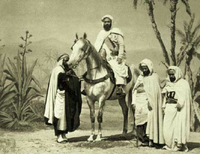
The French Foreign Legion is an elite corps of the French Army that consists of several specialties: infantry, cavalry, engineers, airborne troops. It was created in 1831 to allow foreign nationals into the French Army. It formed part of the Armée d’Afrique, the French Army's units associated with France's colonial project in Northern Africa, until the end of the Algerian War in 1962.

Marcel Bigeard, personal radio call-sign "Bruno", was a French military officer and politician who fought in World War II, the First Indochina War and the Algerian War. He was one of the commanders in the Battle of Dien Bien Phu and is thought by many to have been a dominating influence on French "unconventional" warfare thinking from that time onwards. He was one of the most decorated officers in France, and is particularly noteworthy because of his rise from being a regular soldier in 1936 to ultimately concluding his career in 1976 as a Lieutenant General and serving in the government of Valéry Giscard d'Estaing.

The 2nd Foreign Parachute Regiment is the only airborne regiment of the Foreign Legion in the French Army. It is one of the four infantry regiments of the 11th Parachute Brigade and part of the spearhead of the French rapid reaction force.
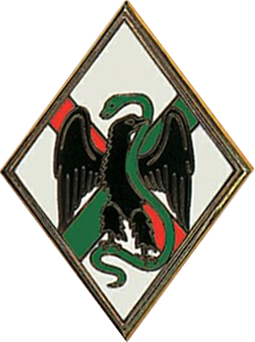
The 1st Foreign Regiment is a depot regiment of the Foreign Legion in the French Army. It is located at Aubagne.

The 13th Demi-Brigade of Foreign Legion, was created in 1940 and was the main unit of the 1st Free French Division, Free French Forces (FFL). From the coast of Norway to Bir Hakeim, to Africa then the Alsace, while passing by Syria and Italy, the 13th Demi-Brigade would be part of most of the major campaigns of the French Army during the Second World War.

Elements from the French Armed Forces used deliberate torture during the Algerian War (1954–1962), creating an ongoing public controversy. Pierre Vidal-Naquet, a renowned French historian, estimated that there were "hundreds of thousands of instances of torture" by the French military in Algeria.

The 2nd Foreign Infantry Regiment is an infantry regiment of the Foreign Legion in the French Army. The regiment is one of two mechanized infantry regiments of the 6th Light Armoured Brigade.
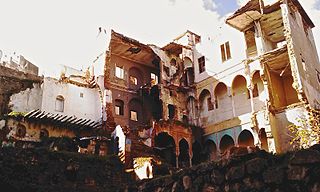
The Battle of Algiers was a campaign fought during the Algerian War. It consisted of urban guerrilla warfare and terrorist attacks carried out by the National Liberation Front (FLN) against the French authorities in Algiers, and by the French authorities, army, and French terrorist organizations against the FLN. Both sides targeted civilians throughout the battle. The conflict began with attacks by the FLN against the French forces and Pieds-Noirs followed by a terrorist attack on Algerian civilians in Algiers by a group of settlers, part of the terrorist group "La Main Rouge", aided by the police. Reprisals followed and the violence escalated, leading the French Governor-General to deploy the French Army in Algiers to suppress the FLN. Civilian authorities gave full powers to General Jacques Massu who, operating outside legal frameworks between January and September 1957, eliminated the FLN from Algiers. The use of torture, forced disappearances and illegal executions by the French later caused controversy in France.
The Battle of Agounennda was an engagement of the Algerian War fought from the 23–25 May 1957 between the French 3rd Colonial Parachute Regiment under Lieutenant Colonel Marcel Bigeard and FLN’s Commando 41 under Si Azzedine. Bigeard and his regiment were sent to hunt down the Commando after it had carried out several successful ambushes against French units. They met at Agounennda where the French paratroopers tried to ambush the FLN force, but the FLN discovered the French and instead concentrated their force against an outlying French company.
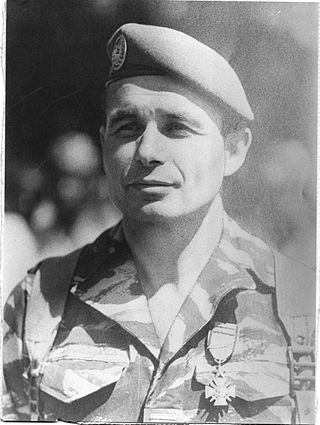
Philippe Louis Edmé Marie François Erulin was a senior French military officer. He is best known as the Colonel Commandant of the 2nd Foreign Parachute Regiment 2e REP, who directed the military intervention in Zaïre during the Shaba II conflict against rebels of the Congolese National Liberation Front (FLNC).
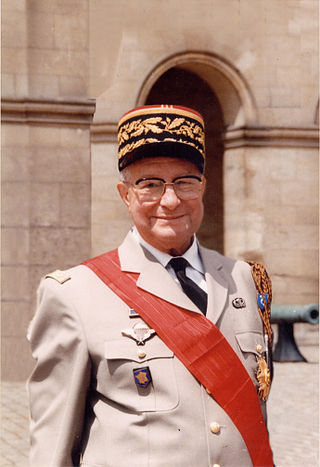
Jean Compagnon was a French officer and Général de corps d'armée.
Antoine Mattei was an officer of the French Foreign Legion made famous by the writings of Paul Bonnecarrère, who published in 1968 Par le sang versé, the title refers to one of the ways a legionnaire obtains French nationality, and La guerre cruelle in 1972, which also featured his exploits. He is a legendary figure of the 3rd Foreign Infantry Regiment. He published an account of his time during the war in Indochina under the title Tu survivras longtemps. The title is a quote from a poem by Louis Aragon.

The Battle of Bab el Oued was a violent confrontation which occurred during the latter stages of the Algerian War (1954–1962) between the French Army and the Organisation armée secrète (OAS) which opposed Algerian independence. It took place in Bab El Oued, then a working-class European quarter of Algiers, from 23 March to 6 April 1962.
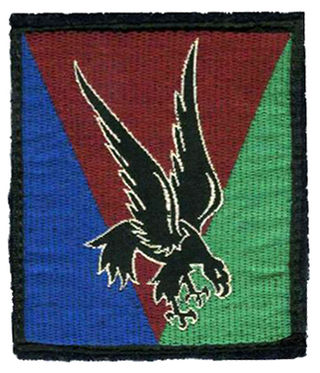
The 10th Parachute Division was a formation of the French Army, part of the French Airborne Units. It consisted predominantly of infantry troops, and specialized in airborne combat and air assault. Established in 1956, it fought primarily in the Suez Crisis and the Algerian War. It was dissolved immediately after the Algiers putsch of 1961.
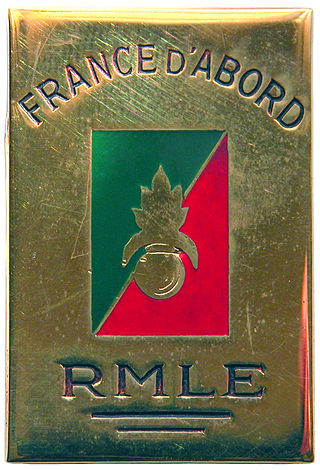
The Marching Regimentof the Foreign Legion (RMLE) was a French military unit that fought in World War I and World War II. Initially composed of marching regiments from the 1st Foreign Regiment of Sidi Bel Abbes and the 2nd Foreign Infantry Regiment of Saida, Algeria, it re-formed as the 3rd Foreign Infantry Regiment.
Marcel Letestu was a Général de brigade of the French Army and Commandant of the Foreign Legion.
Yves Courrière, real name Gérard Bon was a French writer, biographer and journalist.

Paul Gardy was Général de brigade of the French Army and Commandant of the Foreign Legion in 1951 and 1958.
Jacques Lefort was a Général de corps d'armée of the French Army and Commandant of the Foreign Legion.

The Ambush of Palestro, or Ambush of Djerrah, took place on the 18th May 1956, during the Algerian war, near the village of Djerrah in the region of Palestro in Kabylie. A section of about forty men from the National Liberation Army (ALN) under the command of Lieutenant Ali Khodja ambushed a unit of 21 men from the 9th Colonial Infantry Regiment of the French Army commanded by Second Lieutenant Hervé Artur.















